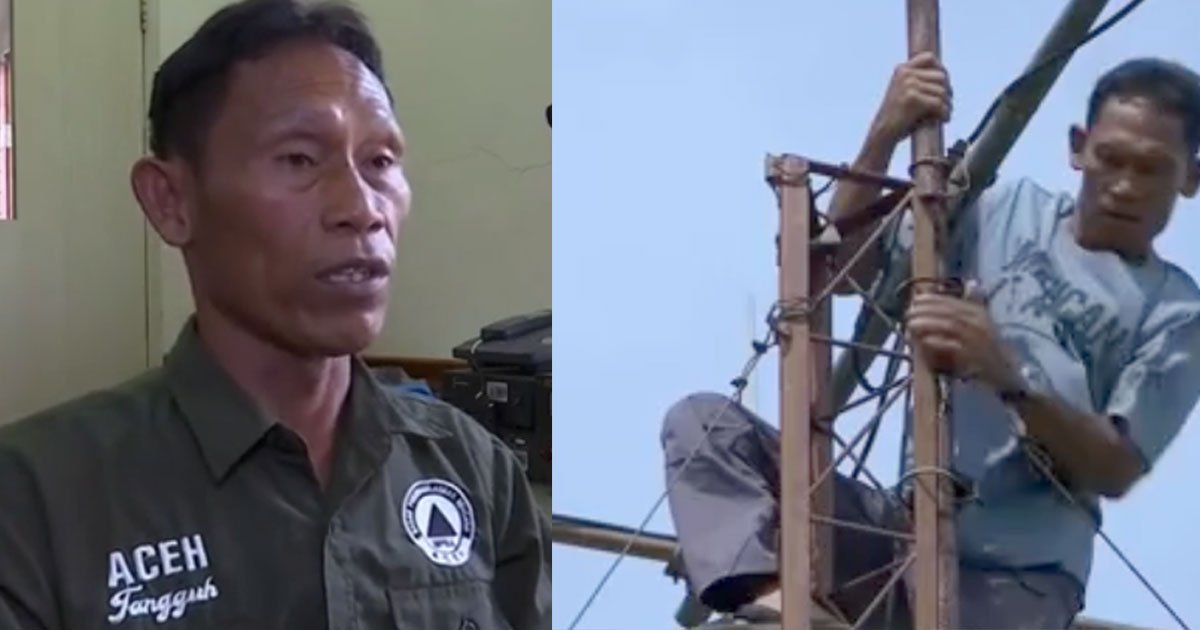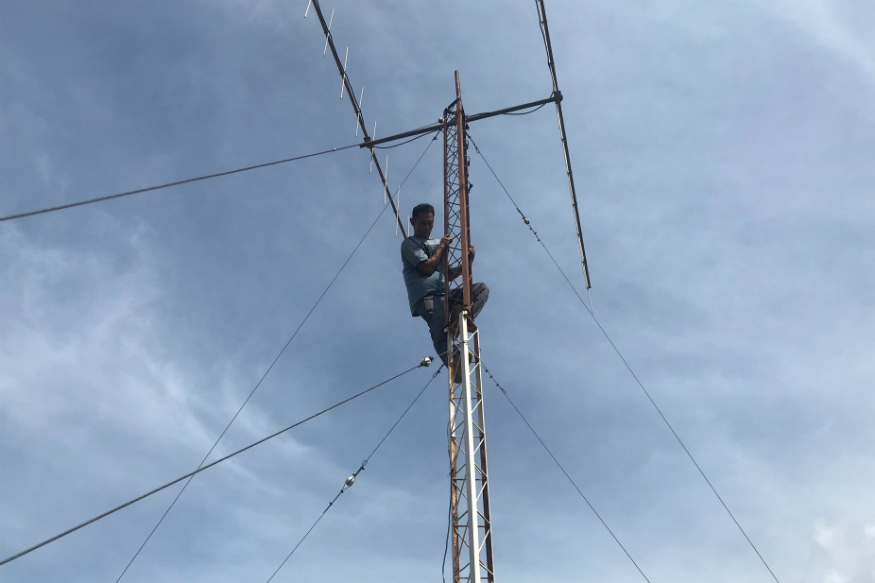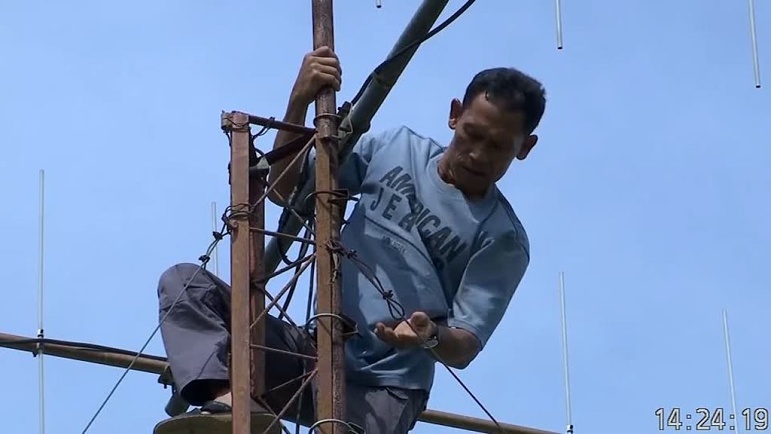Arif Munandar woke up in a body bag 15 years ago, after a tsunami swept through his village in Indonesia’s northern Aceh province.
The lucky man survived but lost 24 family members, including his wife and three children.
Watch to learn more of his story below.
[rumble video_id=v5zfbz domain_id=u7nb2]
Video credit: Rumble
Now he is on a mission to keep his village’s tsunami early warning system well maintained. On December 26 2004, more than 230,000 people died in 13 countries including Indonesia, Sri Lanka, India and Thailand after a 9.1 magnitude earthquake opened a fault-line deep beneath the Indian Ocean, triggering a tsunami as high as 17.4 meters.
Tsunami survivor and radio technician at Aceh disaster mitigation agency, Arif Munandar said: “We will continue to do what we can, providing information to the community in order to minimize the number of casualties when such a disaster happens again.
We don’t want a large number of casualties, so, we need to anticipate disasters – even if that means we need to do it manually – we must provide every support we can.”
According to government and aid agency figures, 128,858 people died there and more than 37,000 are still listed as missing.
Across 28 countries, over $400 million has since been spent on an early warning system. Speaking via Skype from India’s Hyderabad, Srinivasa Tummala – who heads the Indian Ocean Tsunami Warning and Mitigation System said ‘there are gaps in the system.’
Head of intergovernmental coordination group for the Indian ocean tsunami warning and mitigation system secretariat, Srinivasa Tummala said: “So you need more stations, and then more importantly you need more data sharing, real time data sharing among member states and with this tsunami service providers so that the accuracy and the timeliness of tsunami warning can be improved.
”
[rumble video_id=v57vqh domain_id=u7nb2]





